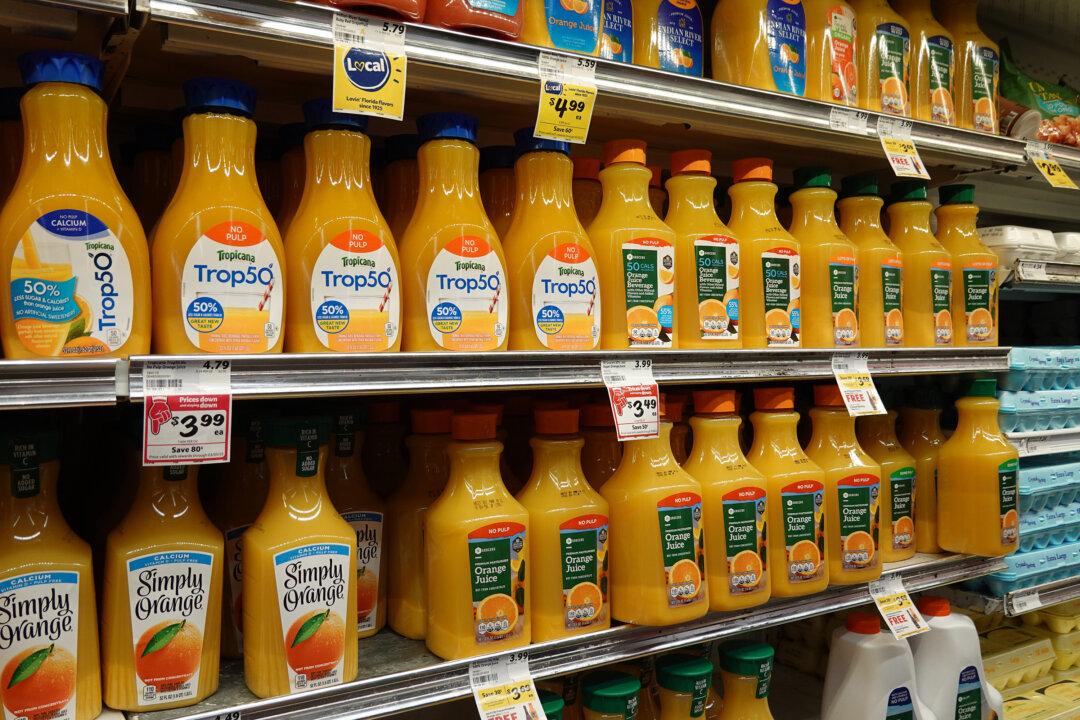Orange juice futures have hit record highs because of hurricanes and a citrus disease that destroyed crops in Florida, leading to higher prices in the grocery store.
In recent weeks, prices in the orange juice futures market hit $3 per pound, a jump from $1.81 per pound around the same time in 2022.
Skyrocketing citrus prices have also been fueled primarily by worldwide supply shortages.
A Series of Catastrophes Hits Florida’s Citrus Crop
Damage from hurricanes Ian and Nicole in the fall of 2022, plus a late freeze later that year, devastated crops already thinned by citrus greening that inhibits key nutrients to orange trees.
Trees that were hit with the disease produced fewer, lower-quality oranges that were unfit for consumption.
The Asian citrus psyllid, the insect which has been spreading the disease, which was first detected in Florida in 2005 and spread rapidly across the peninsula.




